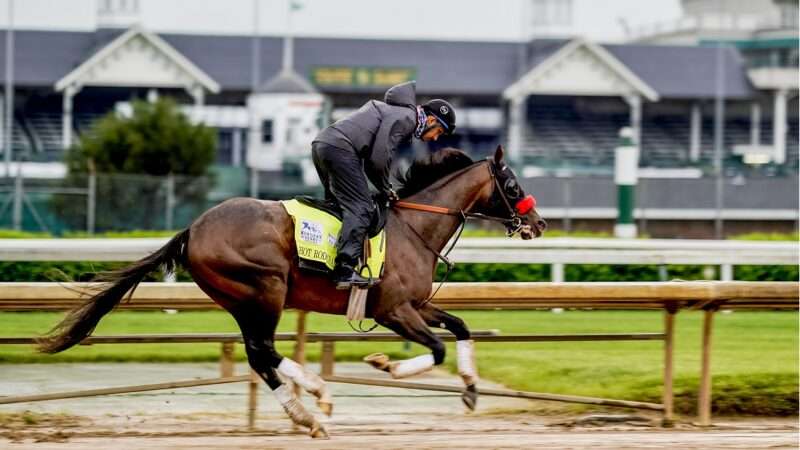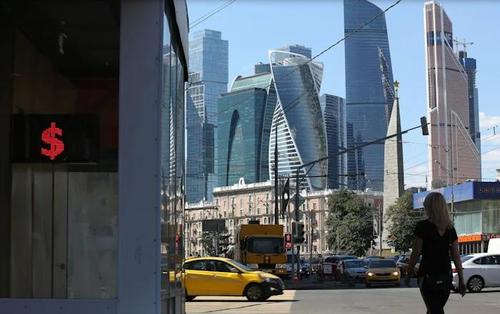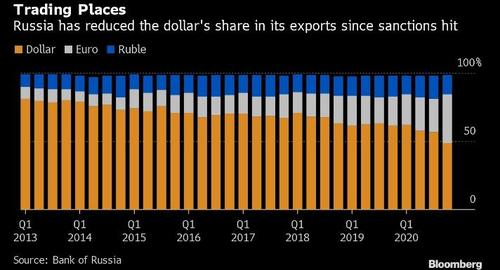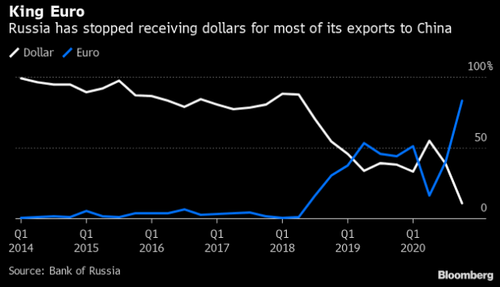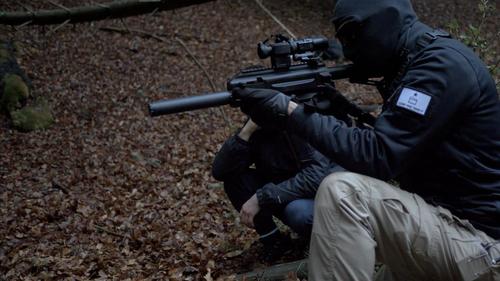As I wrote last year, a Cincinnati policeman sued for libel over a post that accused him “of possibly being associated with white supremacy or of being racist after spotting a video and picture of him allegedly flashing the ‘ok’ sign at a City Council meeting … held to address concerns by those in the Black Lives Matter Movement.” In the process, two unusual things have happened:
- The judge responded by issuing a preliminary injunction ordering the defendants not to “publiciz[e], through social media or other channels, Plaintiff’s personal identifying information,” which apparently includes the policeman’s name. I think this is a classic prior restraint; in January, the Ohio Supreme Court agreed to review it. (I filed an amicus brief in the case through the UCLA First Amendment Clinic, on behalf of various law professors and media and advocacy groups.)
- The judge also allowed the policeman to litigate the case pseudonymously (under the pseudonym M.R.), and allowed one of M.R.’s affidavits to be redacted. Her rationale was that identifying M.R. might lead someone to physically attack him.
I’m happy to say that Wednesday, the Ohio Supreme Court also agreed to review the pseudonymity and sealing decision, in two consolidated cases, State ex rel. Cincinnati Enquirer v. Shanahan and State ex rel. Volokh v. Shanahan. Many thanks to our excellent pro bono counsel Jeffrey M. Nye (Stagnaro, Saba & Patterson), whose help has been indispensable as to both those claims, and who has done the bulk of the work on the second one.
Note that our civil justice system generally operates with open records, and with people litigating under their own names. You can read more about that argument in our memorandum, but here’s an excerpt:
Open courts are a critical component of a functioning democracy. Public access to the courts “gives assurance that established procedures are being followed and that deviations will become known.” State ex rel. The Beacon Journal Publishing Co. v. Bond, 98 Ohio St.3d 146, 2002-Ohio-7117, ¶16, quoting Press-Enterprise Co. v. Superior Court (1984), 464 U.S. 501, 508 (“Press-Enterprise I“). As a result, “Court records are presumed open to public access.” Sup.R. 45(A).
This [Ohio] Superintendence Rule is a codification of the fundamental right of public access to courts that is found in the common law. See, e.g., In re T.R. (1990), 52 Ohio St.3d 6, 16 n.9 (observing that traditionally civil actions involving adults “are presumptively open to the public” at common law); Doe v. Megless, 654 F. 3d 404, 408 (CA3 2011) (“One of the essential qualities of a Court of Justice is that its proceedings should be public.”) (internal markup omitted); Woyt v. Woyt, 12th Dist. Cuyahoga nos. Nos. 107312, 107321, and 107322, 2019-Ohio-3758, ¶67. (“It should only be in the rarest of circumstances that a court seals a case from public scrutiny. When a litigant brings his or her grievance before a court, that person must recognize that our system generally demands the record of its resolution be available for review.”).
That right of public access to the courts is also enshrined in the First Amendment to the US Constitution. See, e.g., Press-Enterprise Co. v. Superior Court, 478 US 1, 8-9 (1986) (“Press-Enterprise II“) (finding that a constitutional right of access presumptively attaches to any proceedings or documents that “experience and logic” show to have been historically open); Cincinnati Gas and Elec. Co. v. General Elec. Co., 854 F. 2d 900, 906 (CA6 1988) (“the touchstone of the recognized right to access” judicial proceedings under the First Amendment is whether the court’s “coercive powers” are “exercise[d]”).
That right is also enshrined in the Ohio Constitution and in the rules promulgated by this Court. See Ohio Const., Sec. 16, Art. I (“All courts shall be open ….”); State ex rel. The Repository v. Unger (1986), 28 Ohio St.3d 418, 423-424 (the Ohio Bill of Rights’ “‘open courts’ mandate[ was] inspired by a profound distrust of secret judicial proceedings. Indeed, it is often said that justice cannot survive behind walls of silence. Democracy blooms where the public is informed and stagnates where secrecy prevails.”) (Celebrezze, C.J., concurring); Civ.R. 10(A) (“Every pleading shall contain a caption setting forth … the title of the action. In the complaint the title of the action shall include the names and addresses of all the parties, but in other pleadings it is sufficient to state the name of the first party on each side with an appropriate indication of other parties.”); Doe v. Bruner, 12th Dist. Clinton no. CA2011- 07-013, 2012-Ohio-761, ¶5 (Civ.R. 10(A), like its federal counterpart, “demonstrates the principle that judicial proceedings, civil as well as criminal, are to be conducted in public.”) (internal markup omitted).
The right of access extends to documents filed with the court, see Sup.R. 44(B) (defining “court records” as including “case documents,” which in turn includes “information in a document submitted to a court or filed with a clerk of court in a judicial action or proceeding, including exhibits”), but the right is not limited to accessing filed documents. It also extends to the identity of parties. See Megless, 654 F.3d at 408 (“Identifying the parties to the proceeding is an important dimension of publicness. The people have a right to know who is using their courts. A plaintiff’s use of a pseudonym runs afoul of the public’s common law right of access to judicial proceedings.”) (internal markup and citations omitted). See also State ex rel. Cincinnati Enquirer v. Hunter, 1st Dist. Hamilton no. C-130072, 2013-Ohio-4459, ¶20 (the public has a clear legal right to access court records, “including the full names of” parties to court proceedings, “not just the initials”).
The right of access exists at all stages of the proceedings, see State ex rel. The Repository v. Unger, 28 Ohio St.3d 418, 421 (1986) (while most public-access cases discuss the right to access “trials,” “we hold that the right to a public trial pursuant to the United States and Ohio Constitutions extends to pretrial proceedings.”), and for both criminal and civil cases. See id. at 425 (concurring opinion of Celebrezze, C.J.).
The right of access also exists simultaneously with the proceedings, not merely retrospectively. As the federal Fourth Circuit Court of Appeals explained in Doe v. Public Citizen, 749 F. 3d 246, 272 (CA4 2014), “The public’s interest in monitoring the work of the courts is subverted when a court delays making a determination on a sealing request while allowing litigation to proceed [secretly].” That court explained that “Because the public benefits attendant with open proceedings are compromised by delayed disclosure of documents,” it was important to “underscore … and emphasize that the public and press generally have a contemporaneous right of access to court documents and proceedings.” Id. (emphasis added). Other courts have said that each day that case documents remain unavailable is, in effect, “a separate and cognizable infringement of the First Amendment.” Grove Fresh Distrib., Inc. v. Everfresh Juice Co., 24 F.3d 893, 897 (CA7 1994) (superseded on other grounds by FRCP 5).
The right to know the identity of litigants is especially important when the litigant is a public official, as M.R. is, see Soke v. The Plain Dealer (1994), 69 Ohio St.3d 395, 397 (“police officers are public officials”), and when the litigation relates to the public official’s performance of his official duties (as M.R.’s litigation does; see Nye Affidavit Exhibit A (M.R.’s complaint) at ¶1, 16). See Garrison v. Louisiana, 379 U.S. 64, 77 (1964) (there exists, and the First Amendment protects, “the paramount public interest in a free flow of information to the people concerning public officials, their servants.” The public has not just a right but an obligation to monitor how public officials operate public institutions, see Doe v. Public Citizen, 749 F.3d at 271 (“Indeed, the public has a strong interest in monitoring not only functions of the courts but also the positions that its elected officials and government agencies take in litigation.”), and that includes both the public court system and police officers, both of which dispense justice in the public’s name.
That interest extends to how a public official conducts litigation, and conducts himself in litigation (including but not only his truthfulness in sworn statements), see Soke at 398, and the First Amendment interests do not abate “merely because an official’s private reputation, as well as his public reputation,” may be affected. Garrison at 77. See also id. (“Few personal attributes [of a public official] are more germane to fitness for office than dishonesty, malfeasance, or improper motivation, even though these characteristics may also affect the official’s private character.”); Unger, 28 Ohio St.3d at 424 (Celebrezze, C.J., concurring) (litigation “should take place under the public eye, not because the controversies of one citizen with another are of public concern, but because it is of the highest moment that those who administer justice should always act under the sense of public responsibility, and that every citizen should be able to satisfy himself with his own eyes as to the mode in which a public duty is performed”).
Every one of these factors shows that Relator Volokh (and the public as a whole) has a clear legal right to access these court records. They are presumptively open to the public. See Sup.R. 45(A). They are also traditionally open to the public, see In re T.R., 52 Ohio St.3d at 16 n.9 and Doe v. Megless, 654 F. 3d at 408-409 (discussing “the traditional rule of openness”), and “experience and logic,” Press-Enterprise II, 478 U.S. at 9, dictate that the public have access to records and proceedings that have historically been open.
The public has a right to know when the courts exercise “coercive power” in the public’s name, Cincinnati Gas and Elec., 854 F. 2d at 906, and in M.R.’s case Respondent exercised perhaps the ultimate coercive power available in civil proceedings—a prior restraint. See Nebraska Press Ass’n v. Stuart, 427 U.S. 539, 609 (1976) (Brennan, J., concurring in reversal of prior restraint) (“Prior restraints fall on speech with a brutality and a finality all their own.”). The sealing of the court records impedes the public’s right and duty to “monitor” the courts and public officials—to know the parties (and especially the public officials) who are using the court system, what they are using it for, what evidence supports their claims, and whether justice is being appropriately administered. See Public Citizen at 271; Garrison at 77; Unger at 424….
[To justify an exception to this right of access, there must be] “real-world evidence” from the plaintiff; “generalized fears regarding the contention that” the plaintiff’s “safety is at risk” is not enough, DeAngelis at *9, and neither is a “generalized notion that [the plaintiff] would be exposed to public ridicule or harassment.” Franklin County at *7.
Again, M.R.’s claims are nearly the polar opposite of matters of “utmost intimacy” [that might justify pseudonymity]. A public official’s performance of his official duties, and that official’s use of the court system to punish criticism of his performance of his official duties, are among the paradigmatic examples of matters of public interest, not “utmost intimacy.” See discussion of Soke, Garrison, Public Citizen, and Unger, supra Part 1(A). This is particularly true where the public official is the plaintiff rather than the defendant. See Doe v. F.B.I., at 218 F.R.D. at 259 (“By initiating an action for damages based on the FBI’s disclosure of Plaintiffs confidential File, Plaintiff has chosen to bring a private matter into the public eye.”). M.R. made the choice to seek redress in the public court system. The resolution of that dispute must be public, and cannot be had under a pseudonym.
from Latest – Reason.com https://ift.tt/33c1lut
via IFTTT
